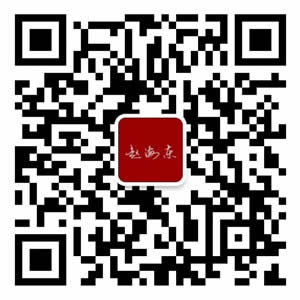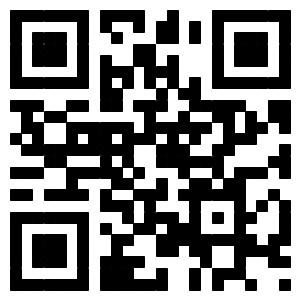Tips to brand your website �W(w��ng)վ���O(sh��)�Ľ��h �� Include your logo in all pages. Position it at the top left or each page. �_��ÿ���W(w��ng)퓵����Ϸ����F(xi��n)logo�� �� Complement your logo with a tagline or catchy sentence that summarizes your business purpose. For example "Always low prices" is the tagline for Wal-Mart. logo��߅���F(xi��n)��(bi��o)�Z�����ǽ�B��I(y��)���c���Z���������f��������ƽ�r�����֠���?sh��)Ę?bi��o)�Z�� �� Create a favicon. A favicon is that small graphic that appears next to the URL in the address bar. ��(chu��ng)��favicon��Favicon�dz��F(xi��n)�ڵ�ַ��URL��߅�ĈD�Ρ� �� Have a consistent look and feel in all your pages. Use a color scheme and layout that are clearly recognized across your site. �������^�W(w��ng)��O(sh��)ӋҪһ�����W(w��ng)վ���ɫ������Ҫһ���� �� Have an About Us section, that includes all relevant information about you and your business. �W(w��ng)վ�O(sh��)�á�(li��n)ϵ�҂�����K�����������P(gu��n)�����c��˾�����P(gu��n)��Ϣ�� �� Include a copyright statement at the bottom of each page. �W(w��ng)퓵ײ��������(qu��n)��Ϣ�� Tips on website navigation �W(w��ng)վ��(d��o)��ϵ�y(t��ng) �� Design your pages to load in less than 10 seconds (50Kb maximum size, including pictures). �W(w��ng)����d�r�g������10��֮��(n��i)��50kb�������DƬ���� �� Group your navigational options in relevant categories. ���P(gu��n)�Č�(d��o)����(n��i)�ݷ���һ���� �� Use common names for your menu options: Home, About Us, Contact Us, Help, Products. Avoid "clever" or "trendy" alternatives. �ˆΙ��x�ʹ�ó��õ����Q��������P(gu��n)���҂���(li��n)ϵ�҂����������a(ch��n)Ʒ��������F(xi��n)�r�������е��x헡� �� If your site uses Flash, provide also an HTML version for users who prefer a less fancy, faster site. ����W(w��ng)վ����Flash���_�����F(xi��n)HTML�汾����Щ�Ñ���ϲ�gѣĿ�ľW(w��ng)վ�� �� Provide simple text navigation links at the bottom of long pages, so users don��t need to scroll back up. �W(w��ng)퓵ײ����F(xi��n)���ε��ı�朽����@���Ñ������˻ؾW(w��ng)�픲��� �� Link your logo to your homepage, except in the homepage itself. Put a link to your homepage on all your internal pages. logo�c����M(j��n)��朽ӣ���ȥ���logo֮�⣩���������ж������Ҫ�c����M(j��n)��朽��� �� Display a "breadcrumb trail"; it is basically the path from the homepage to the page where you are. A breadcrumb trail looks like this: Home > Section > Sub-Section > Page, and it greatly facilitates navigation. չʾ�W(w��ng)վ�g�[·������ָ������M(j��n)���������·���������f����� > ���ˆ�>�μ��ˆ� > ����������@���Ñ����Է���ز����W(w��ng)վ�� �� If your site is too big, provide Search capabilities. Include a search box in the upper right corner of your homepage, and a link to a Search page from your interior pages. Freefind ( ) offers you a free and powerful search engine for your site. ����W(w��ng)վ��(n��i)��̫����������ṩվ��(n��i)�������W(w��ng)վ��퓵����Ϸ������O(sh��)Ӌ�������������ṩ����������Լ���(n��i)������c��������朽����W(w��ng)վ��Ҫ�߂书��(qi��ng)�������M������������ �� Set your search box to search your site, not to search the web. �������Á������W(w��ng)վ��(n��i)�������������оW(w��ng)�j(lu��)��(n��i)���� �� Create a custom error page that displays a simple site map with links to the main sections of your site. That way, you will not lose visitors that have followed a bad link to your site or who have misspelled your URL. ��(chu��ng)�����õ��e�`���������гʬF(xi��n)վ�c�؈D���Լ��c�W(w��ng)վ��Ҫ��(n��i)�ݵ�朽����@�����W(w��ng)վ������ʧ朽ӟoЧ����URLݔ���e�`���L������ Tips on Layout and Content Presentation �����c��(n��i)�ݵ��O(sh��)Ӌ���� �� Save the top of your page for your most important content. Remember: good content must flow to the top. �W(w��ng)�픲��ă�(n��i)�ݑ�(y��ng)ԓ������Ҫ�ă�(n��i)����Ոӛ�����Ã�(n��i)�ݱ�횷�����픲��� �� Lay out your page with tables, and set the width in percentage terms instead of a fixed number of pixels. That way, your page will always fit the screen, without the need to scroll horizontally. �W(w��ng)퓿����ñ����������ðٷֱ��O(sh��)�����������ù̶����ؔ�(sh��)�����@�ӾW(w��ng)퓕����h(yu��n)�c�@ʾ�����m��(y��ng)���������F(xi��n)ˮƽ�L�ӗl�� �� Optimize your page to be viewed best at 800x600 (the most popular resolution at the time of this writing). ��(y��u)���W(w��ng)����_����800x600����ã��ֱ��ʠ�B(t��i)�£��W(w��ng)퓳ʬF(xi��n)��B(t��i)�� �� Use high contrast for the body of your page: black text on white background, or white text on black background work best. �W(w��ng)��ı���(n��i)���ɫ����Ҫ���@����ɫ�ı������ɫ���������߰�ɫ�ı������ɫ������ �� Don��t use too many different fonts in one page. Also, avoid using small serif fonts (like Times Roman): they are difficult to read from a computer screen. Verdana is the most web-friendly font, since it is wide, clean and easy to read. �W(w��ng)퓱�����F(xi��n)̫�����w��ͬ�r����ʹ��С��̖��serif���w������Times Roman�����@�ӵ����w���F(xi��n)����X�@ʾ���У���������x��Verdana��һ�N���m�ϾW(w��ng)վ�����w����������ȴ�������������x�� �� Avoid long blocks of text. Use tools that facilitate scanability, like bullets, subtitles, highlighted keywords, hyperlinks, etc. ������F(xi��n)��������������������Ñ��g�[�W(w��ng)վ�Ĺ��ߣ��������cʽ�б�������(bi��o)�}���P(gu��n)�I�~�Լ���朽ӵȵ��� �� Avoid amateurish features like: numeric page counters, wholesale use of exclamation points, all caps, center justified blocks of text, excessive animated gifs, busy backgrounds, etc. �W(w��ng)վ������F(xi��n)������������(sh��)��Ӌ��(sh��)���������Ї@�~��ȫ������ĸ��ȫ���ı���(n��i)�ݾ��С������Ӯ��DƬ����(f��)�s�ı����ȵȡ� �� Don��t use pop-up windows. They distract your visitors and are immediately dismissed as ads. ����ʹ�Ï�����������������ڏV�棬����ɢ�L���ߵ�ע������ �� Test your site so that it looks good in different browsers and resolutions. �ڲ�ͬ�Ğg�[���Լ��ֱ��ʠ�B(t��i)�£��yԇ�W(w��ng)վ�� Tips on Writing for the Web �W(w��ng)վ�ı���(n��i)���O(sh��)Ӌ���� �� Write in layman��s terms so that everybody can understand your content, unless you��re running a technical site for technical people. ������F(xi��n)���I(y��)�g(sh��)�Z�����C���Оg�[������W(w��ng)վ��(n��i)�������ǾW(w��ng)վ�Ǟ鼼�g(sh��)�ˆT�ṩ���I(y��)���g(sh��)����(w��)�ľW(w��ng)վ�� �� Reading from a screen is painful: use 50% less words than you would use on print. ��x��X�@ʾ���е����ִ_����һ���y�������ԾW(w��ng)վ����Ҫ����ӡˢƷ���ֵ�50%�� �� If a page is too long, break it into several pages and link to them. ����W(w��ng)�̫�L����Ҫ������Ɏ��W(w��ng)��������c�@Щ�W(w��ng)��M(j��n)��朽��� �� Don��t use font sizes smaller than 10pt. for the body of your page. Specify your fonts in percentage terms instead of pixels, to let users set their own size preferences using their browser��s text view options. �W(w��ng)��ı���̖��С��10pt�����ðٷֱ�ָ���W(w��ng)վ���w�������������������@���Ñ����Ը���(j��)�Լ���ϲ�������Þg�[���ı��x����_����̖�� �� Use a spell checker. Spelling mistakes are embarrassing and hurt credibility. ����ƴ���z����W(w��ng)վ������F(xi��n)���ε�ƴ���e�`���@�ӕ����;W(w��ng)վ���u(y��)�ȡ� Tips to Know Your Customers �˽�W(w��ng)վ���M�ߵķ��� �� Ask for feedback: include a feedback form in your Contact Us page. ��������Ϣ����(li��n)ϵ�҂����ľW(w��ng)��г��F(xi��n)���������� �� Publish an ezine and include a subscription form in your homepage. Give your customers valuable information and encourage them to contact you. ��������s־���W(w��ng)վ��퓳��F(xi��n)ӆ醷�ʽ�����Ñ��ṩ�Ѓrֵ��Ϣ���Ą������c��(li��n)ϵ�� �� Include polls and other tools to gather market intelligence. ����ͶƱϵ�y(t��ng)�Լ����������ռ��I�N�Y���� Tips on Linking 朽ӷ��� �� Make your links descriptive. They should indicate what the user will be linking to, as opposed to just saying "click here". 朽ӑ�(y��ng)ԓ�������Եģ���(y��ng)ԓ�f���Ñ�朽ӵĵ�ַ������Ҫ�H�H���F(xi��n)���c���@������ �� Don��t underline anything that is not a link. ��朽Ӄ�(n��i)�������ܳ��F(xi��n)������ �� Underline your links and use a consistent color for them across your site (preferably blue). �W(w��ng)վ朽Ӄ�(n��i)�ݑ�(y��ng)ԓ���F(xi��n)���������ҾW(w��ng)վ����朽Ӄ�(n��i)�ݵ������ɫ��(y��ng)ԓ��ͬ�� �� Use a different color for visited links, so that your visitors know where they��ve been (preferably purple or a more subdued tone of the unvisited links color). ���L����朽��ɫ��(y��ng)ԓ��ͬ���@���L���߿����˽��ѽ�(j��ng)�g�[�^��Щ��(n��i)�ݣ�δ�L����朽�ʹ����ɫ�����������^��͵��ɫ���� �� When linking to a non-HTML file, such as Excel, Word or Acrobat, make it evident, by including a small icon next to the link. ��(d��ng)�cExcel��Word��Acrobat�ȷ�HTML�ļ�朽ӕr��������朽Ӹ�������һ��С�D��(bi��o)���@�Ӹ����@�� �� Don��t link to "under construction" pages. ������F(xi��n)�c���ڽ��С��W(w��ng)퓵�朽��� �� Make sure that your links work and that you don��t have broken links. There are free online tools that can help you with this. �_��朽ӵ���Ч����������F(xi��n)�oЧ朽ӣ��@�r��������þW(w��ng)�ϵ����M������ �� If you use graphic links, don��t forget to use the ALT attribute. The ALT attribute should describe what are you linking to. �\�ÈDƬ朽ӕr��ʹ��ALT��(bi��o)����ALT��(bi��o)����(y��ng)ԓ�f������朽ӵă�(n��i)�ݡ� Tips on how to use graphics ���ÈDƬ�ķ��� �� Optimize your graphics. Use only .gif and .jpg formats. Make your image files as small as possible while maintaining acceptable quality. Use a free online graphics optimization tool. ��(y��u)���DƬ���DƬֻ����.gif�c.jpg��ʽ���ڱ��C�DƬ�|(zh��)��ǰ���£��M�����s�ı��������ʹ�þW(w��ng)���ṩ�����M�DƬ��(y��u)�����ߡ� �� Use thumbnails (miniature versions of a picture) and make them clickable to the actual size picture. ʹ�ÈDƬ�ĿsС�汾������ʹ�Ñ������c������ԭ�汾朽��� �� Avoid graphics that look like ads. People ignore them. ������F(xi��n)�c�V���������ƵĈDƬ���W(w��ng)վ�L���ߕ���ҕ�@Щ�DƬ�� �� Use the ALT attribute on pictures, even the image is not a link. It helps users with disabilities and people who have turned off graphics. ���ÈDƬ��ALT��������ʹ�DƬ������朽ӡ��@�������ڲ�ϲ�g�DƬ���Ñ��g�[�W(w��ng)վ�� Tips to optimize your site for the search engines: �W(w��ng)վ���������惞(y��u)�� �� Create short, descriptive page titles, to entice search engine users to click on your links. ��(chu��ng)�����̡������ԵľW(w��ng)퓘�(bi��o)�}����ʹ���������Ñ��c���W(w��ng)վ朽ӡ� �� Create a site map containing all your pages, and link to it directly from your homepage. Search engine robots will follow the link to your site map and will most likely add all your pages to the index. ��(chu��ng)���������оW(w��ng)퓵�վ�c�؈D�������c���ֱ���M(j��n)��朽�����������C(j��)���˕�����(j��)朽Ӟg�[վ�c�؈D�������оW(w��ng)����ӵ��������� �� Decide what the two or three main keywords are for each page (the words you believe search engine users will type to find your page) and repeat them often in your page title, description meta tag and page body. �_��ÿ���W(w��ng)퓵�2-3���P(gu��n)�I�~�����J(r��n)���Ñ����I���������������ҾW(w��ng)퓵��~�Z�������Ҵ_���P(gu��n)�I�~��(j��ng)�����F(xi��n)�ھW(w��ng)퓘�(bi��o)�}������meta��(bi��o)���Լ��W(w��ng)����փ�(n��i)���С� �� Create a Links page and call it Resources. In it, place links to those sites that have agreed to place a reciprocal link to your page. The more inbound links you have from quality sites with a topic related to your site, the better your site will rank with the search engines. ��(chu��ng)��朽��������朽�����У��cͬ���c���W(w��ng)վ朽ӵ������W(w��ng)վ�M(j��n)��朽���������u(y��)�ȸߵľW(w��ng)վ�c���W(w��ng)վ朽Ӄ�(n��i)��Խ������ô���W(w��ng)վ�����������е�������Խ�� �� Use more text than graphics, and minimize the use of Flash and JavaScript. Search engines heavily favor text and will crawl and index your site faster. �W(w��ng)վ��ʹ�����փ�(n��i)�ݣ��M���p��ʹ�ÈDƬ��Flash��JavaScript�����������ϲ�g���փ�(n��i)�������Ը��쌦�W(w��ng)վ��������
- TEL��131 7970 3111
-
�۾W(w��ng)��
- ������S�a
- �P(gu��n)ע�����ھ�

-
�֙C(j��)�W(w��ng)վ
- �֙C(j��)������S�a
- �M(j��n)���֙C(j��)վ

�W(w��ng)վ�؈D
���ʽ
